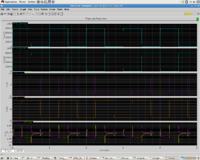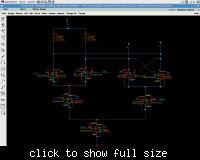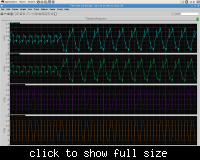viperpaki007
Full Member level 5

Hi,
I need to use 5GHz digital clock for my timing circuit. At the moment, i am using 130nm CMOS and it stops working above 1.5GHz clock because of long propagation delays. Can anybody tell which CMOS process i should use to use for digital clock up-to 5GHz. Moreover, what kind of transistor lengths and widths i should use (At the moment i am using minimum lengths and widths).
I need to use 5GHz digital clock for my timing circuit. At the moment, i am using 130nm CMOS and it stops working above 1.5GHz clock because of long propagation delays. Can anybody tell which CMOS process i should use to use for digital clock up-to 5GHz. Moreover, what kind of transistor lengths and widths i should use (At the moment i am using minimum lengths and widths).







